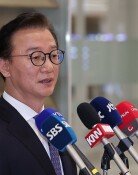South Korea faces setback in drug development race
South Korea faces setback in drug development race
Posted June. 17, 2025 07:40,
Updated June. 17, 2025 07:40
“Where is the time to do research when every hour is spent on treating patients, performing surgeries, and covering shifts?”
The medical standoff that began in February 2023 has had a significant impact on clinical research. With medical students and residents having left hospitals and universities, professors and fellows have had no choice but to cover their duties, leaving little time for academic work.
According to the Journal of Korean Medical Science (JKMS), the number of papers submitted decreased from 1,220 in 2023 to 900 in 2024, representing a decline of approximately 25 percent. Publications by Korean-affiliated researchers in PubMed also declined from 31,873 in 2022 to 30,642 in 2023 and 30,473 in 2024. Given that it takes more than a year to produce a medical research paper, the full extent of the impact is expected to surface in the second half of this year.
In global pharmaceutical clinical trials led by major drug companies last year, Seoul’s participation rate dropped to 1.32 percent, behind Beijing’s 1.4 percent. Seoul had held the top spot from 2017 to 2023, but the recent downturn in domestic clinical research, mainly due to policy conflicts, has started to hinder new drug development. Since every clinical trial requires at least one participating physician, several projects have been halted altogether.
South Korean researchers have faced difficulties joining international studies and recruiting trial participants, causing delays in clinical re-evaluations of some drugs. Industry experts warn that if global pharmaceutical companies start seeing Korea as an unreliable partner, attracting future clinical trial investments could become more challenging.
Meanwhile, China is moving in the opposite direction. It recently surpassed the United States to become the global leader in clinical trial volume. Since joining the International Council for Harmonisation of Technical Requirements for Pharmaceuticals for Human Use in 2017, China has aligned its clinical trial regulations with international standards. Trials conducted there are relatively cost-effective and contribute significantly to drug development. In 2024, four Chinese pharmaceutical firms — Jiangsu Hengrui, Sino Biopharmaceutical, Shanghai Fosun, and CSPC — ranked among the top 25 global companies with the strongest drug pipelines. No South Korean firms made the list. China’s pharmaceutical market grew 7.2 percent year over year and is now valued at $300 billion, or about 410 trillion won.
In August 2023, the Korean government slashed its science and engineering R&D budget by 5.2 trillion won, or 16.6 percent. Although the National Assembly later restored 600 billion won in December, the budget cut had a quick impact on the field. Labs with reduced funding could not conduct full-scale research and experiments, resulting in fewer academic publications. Tech firms that support the research ecosystem also struggled. Today, university hospitals face the same constraints.
Clinical trials, medical research, and drug development are closely connected. Encouragingly, voices in the medical community are calling for renewed dialogue. It is time for the government and healthcare professionals to resolve their differences. The goal must be not only to restore medical services but also to secure future growth engines such as biotechnology and pharmaceuticals. China’s rapid ascent in this sector is already a serious competitive threat.







